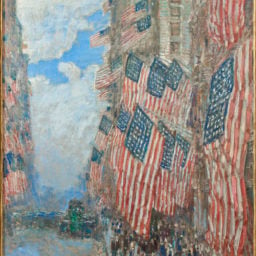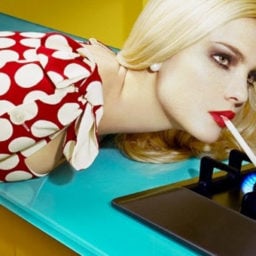From bone-shaking, blowout performances to quiet paintings that embody the evanescent beauty of the lights, fireworks have been a source of inspiration to artists for decades.
In celebration of the US’s foremost fireworks-lighting holiday, the Fourth of July, here are some that really pop.

Andrew Waits, Mighty Cracker (2014).
Photo: Courtesy Andrew Waits.
Andrew Waits, “Boom City”
For his striking photo series “Boom City,” Waits cut open fireworks of all shapes and sizes, letting their interior colors and textures speak for themselves. Who knew unlit fireworks contained such quit and mysterious beauty?
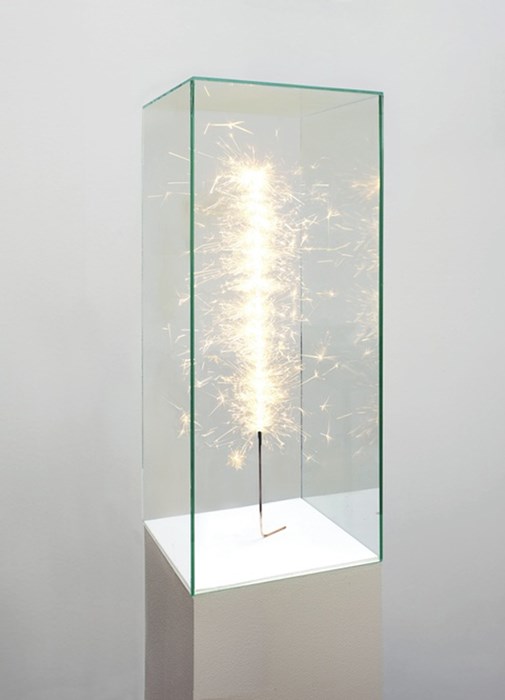
Alwin Lay, Permanent Sparkler (2012).
Photo: Courtesy Natalia Hug Gallery.
Alwin Lay, Permanent Sparkler
Sparklers are definitely one of the best parts of the Fourth of July, and Alwin Lay’s has the added bonus of never burning out. Too bad it’s a photograph and not the real thing.
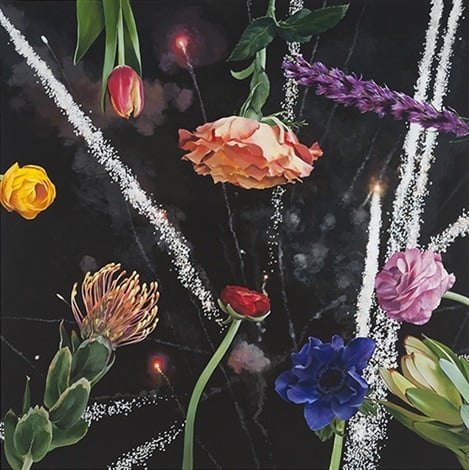
Ben Schonzeit, Fireworks (2015).
Photo: artnet.
Ben Schonzeit, Fireworks (2015)
Photorealist painter Ben Schonzeit perfectly captures what we imagine it would look like if someone set off a firework inside a flower stand.
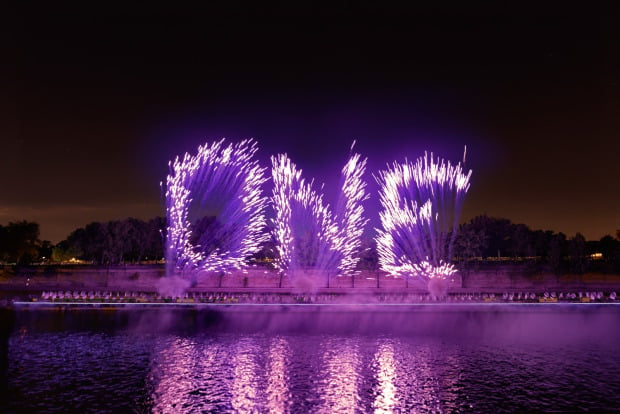
Cai Guo-Qiang, One Night Stand: Explosion Event (2013).
Photo: Thierry Nava, courtesy Cai Studio.
Cai Guo-Qiang, One Night Stand: Explosion Event (2013)
This conceptual, pyrotechnic event was commissioned for Nuit Blanche, an all-night citywide contemporary art event organized by the city of Paris. The loosely narrative show featured three acts that commemorated the passion, imagination and romantic ambiance of the City of Lights.
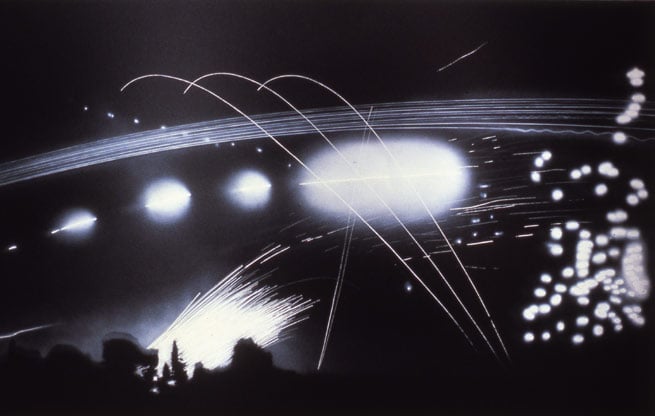
Jack Goldstein, Untitled (1981).
Photo: Courtesy of Metro Pictures Gallery.
Jack Goldstein, multiple works
Jack Goldstein’s photo-realistic paintings typically feature things that are in the process of exploding: bombs, fighter jets, lightning storms, and of course, fireworks. In spite of the late painter’s Canadian roots, we can’t think of a better artist with whom to celebrate the Fourth of July.
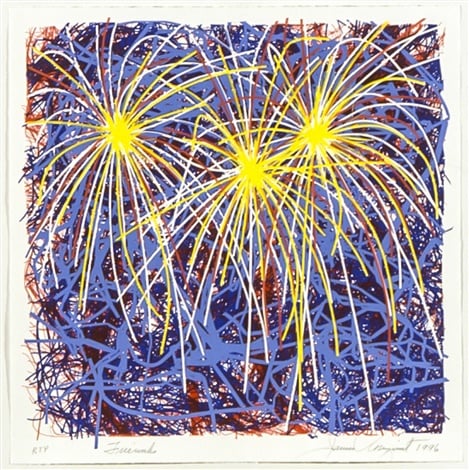
James Rosenquist, Fireworks for President Clinton (1996).
Photo: artnet.
James Rosenquist, Fireworks for President Clinton (1996)
Pop artist James Rosenquist felt no need to keep his political leanings to himself back in 1996, painting a patriotic piece dedicated to president Bill Clinton. He has also created homages to Democratic Party icons John F. Kennedy and Barack Obama.

Giacomo Balla, Fireworks (sketch) (1915).
Photo: Wikipedia Commons.
Giacomo Balla, Fireworks (1915)
Italian Futurist Giacomo Balla conceived of his fireworks as a performance—he constructed a set made of solid geometric wood forms covered in fabric and colored paper. Inside these pyramid and prism forms, he placed electric lights, which operated rhythmically and creating unexpected movement and other effects. Set to the music of Igor Stravinsky, his goal was to evoke “the moods of fireworks,” rather than create a replica.

M.C. Escher, Fireworks (1933).
Photo: Wikipedia Commons.
M.C Escher, Fireworks (1933)
Graphic artist M.C Escher’s fireworks take on the delicate arc of an umbrella, cascading ever-so-perfectly above the crowd of rapt spectators below.
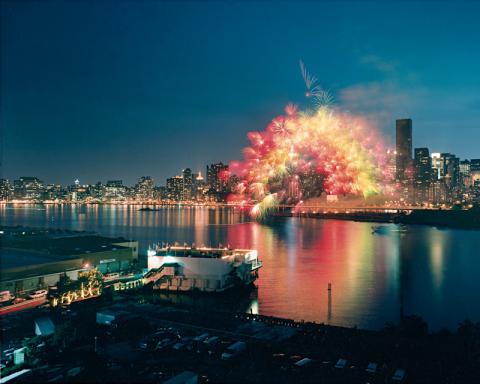
Cai Guo-Qiang, Transient Rainbow (2002).
Photo: Courtesy Cai Guo-Qiang.
Cai Guo-Qiang, Transient Rainbow (2002)
In case you haven’t noticed, Cai is pretty much the king of firework-based art, so consider the double mention deserved. For the opening of MoMA PS1 in 2002, he was commissioned to create a firework rainbow that arched across the city in multicolored glory. What else would we expect from PS1?
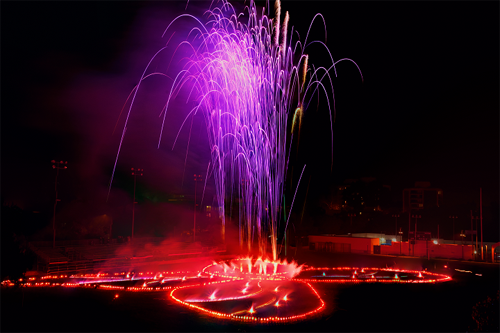
Judy Chicago, A Butterfly for Pomona (2012).
Photo: Courtesy of Prospect Park Alliance.
Judy Chicago, A Butterfly for Brooklyn and A Butterfly for Pomona (2012)
Both of these site-specific works, the first of which took place in Pomona, California, the latter in Brooklyn, sought to transform the feminist imagery Chicago used in her iconic installation, The Dinner Party, into a 20-minute fusion of color and dazzling visual effects. At about 200-feet-wide by 180-feet-high, the majestic piece appears to levitate, swirl, and move.
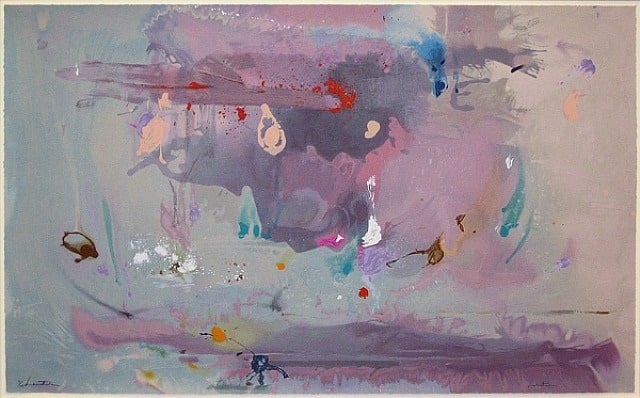
Helen Frankenthaler, Grey Fireworks (2000).
Photo: artnet.
Helen Frankenthaler, Grey Fireworks (2000)
Frankenthaler’s fireworks are considerably more subdued than some of the others on this list, but the lively, frenetic pops of color go a long way in communicating the vigor of the event.
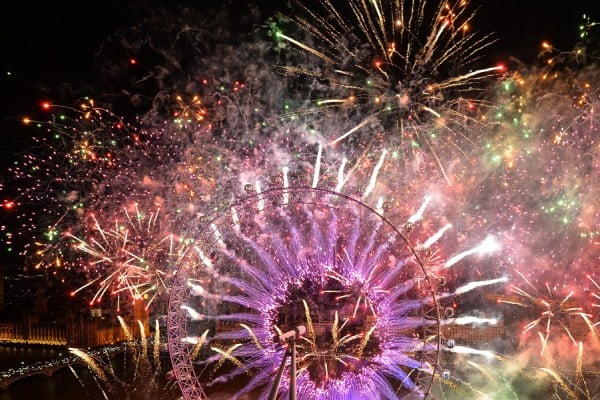
Bompas and Parr’s multi-sensory fireworks display (2013–14).
Photo: Via Patternity.
Bompas & Parr, Multi-Sensory Fireworks (2013–14)
On New Years Eve 2014, the creators of the recent boob bouncy castle created a “multi-sensory fireworks display” in London. The colorful fireworks were matched to an assortment of fruity odors and flavors, so as red explosions took off in the sky, the city was simultaneously engulfed in a strawberry-scented cloud. The simultaneous sensations of seeing, smelling, and tasting the explosions was the first of its kind.
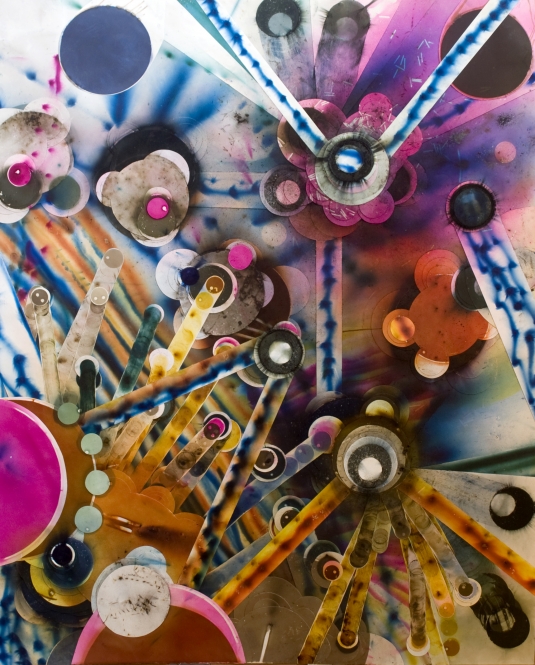
Rosemarie Fiore, Firework Drawing #6 (2009).
Photo: Courtesy of artist and Von Lintel Gallery.
Rosemarie Fiore‘s “Firework Drawings”
Fiore’s kaleidoscopic compositions are made by exploding and containing live fireworks, resulting is bursts of color, often in circular forms. The process of making them is as exhilarating as the final product, and they serve as a true testament to the power of pyrotechnics.

Olaf Breuning, Smoke Bomb 2 (2011).
Photo: Designboom.
Olaf Breuning’s “Smoke Bombs”
These pretty pastel smoke bombs aren’t quite fireworks in the traditional sense, but they certainly have a similar visual presence. Breuning has created and photographed the misty installations in various locations including Art Basel in Miami Beach. His studio assistants have even tangled with the FBI, who were curious as to why they were ordering so many smoke bombs.
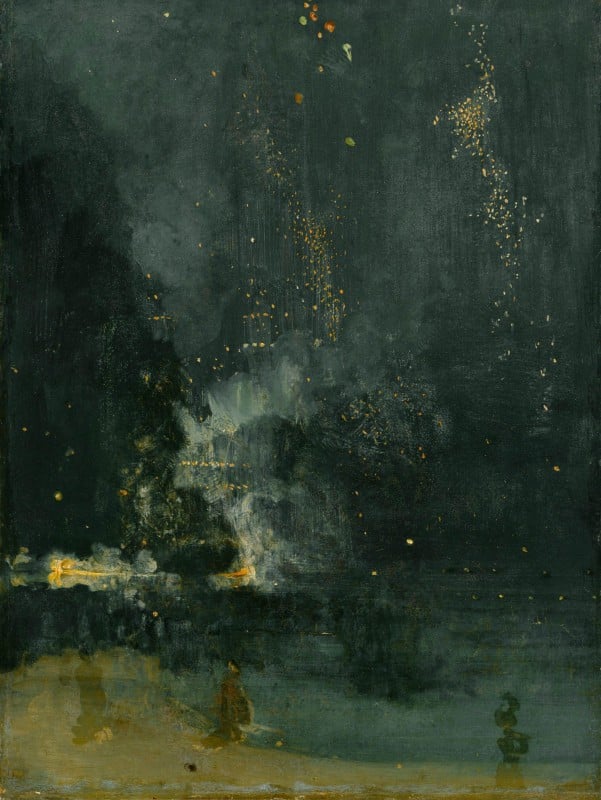
James McNeill Whistler, Nocturne in Black and Gold – The Falling Rocket (1875).
Photo: Wikipedia.
James McNeill Whistler, Nocturne in Black and Gold – The Falling Rocket
Whistler’s beloved painting depicts the last sparks falling from a fireworks display during a foggy night in an industrial city park inspired by London’s Cremorne Gardens. The canvas was also the catalyst for a famed lawsuit between Whistler and art critic John Ruskin, after Ruskin accused Whistler of “flinging a pot of paint in the public’s face.”


